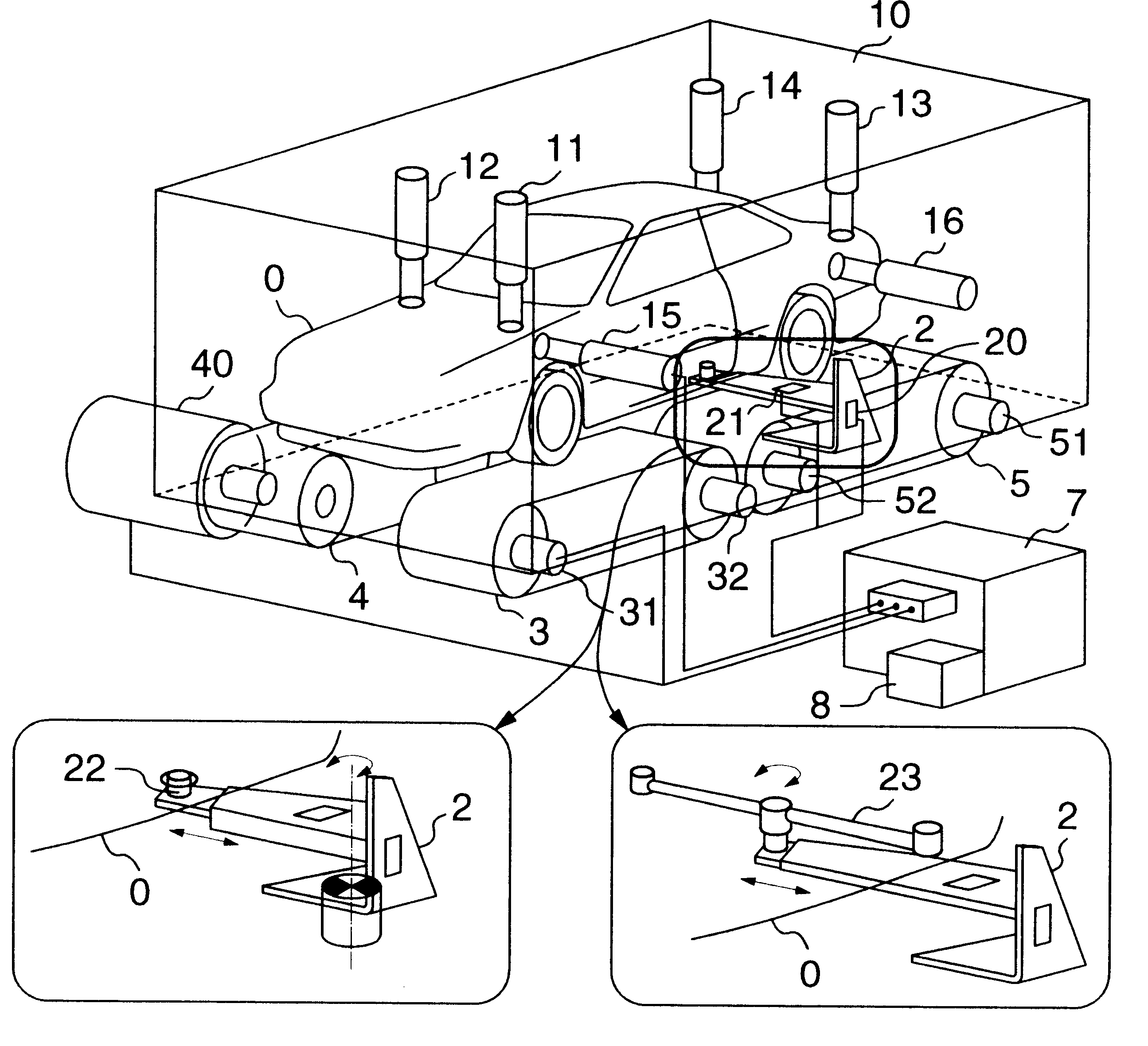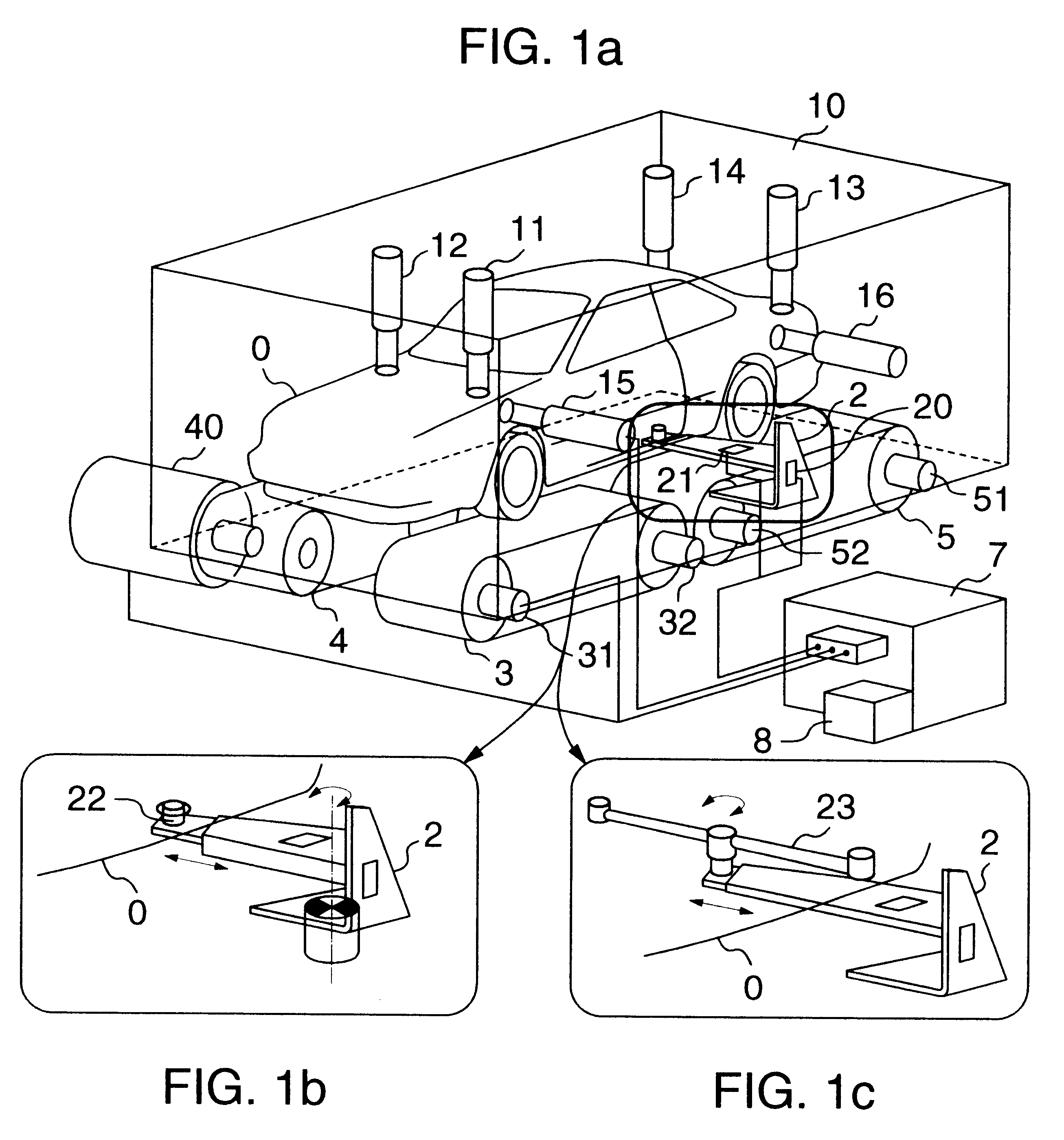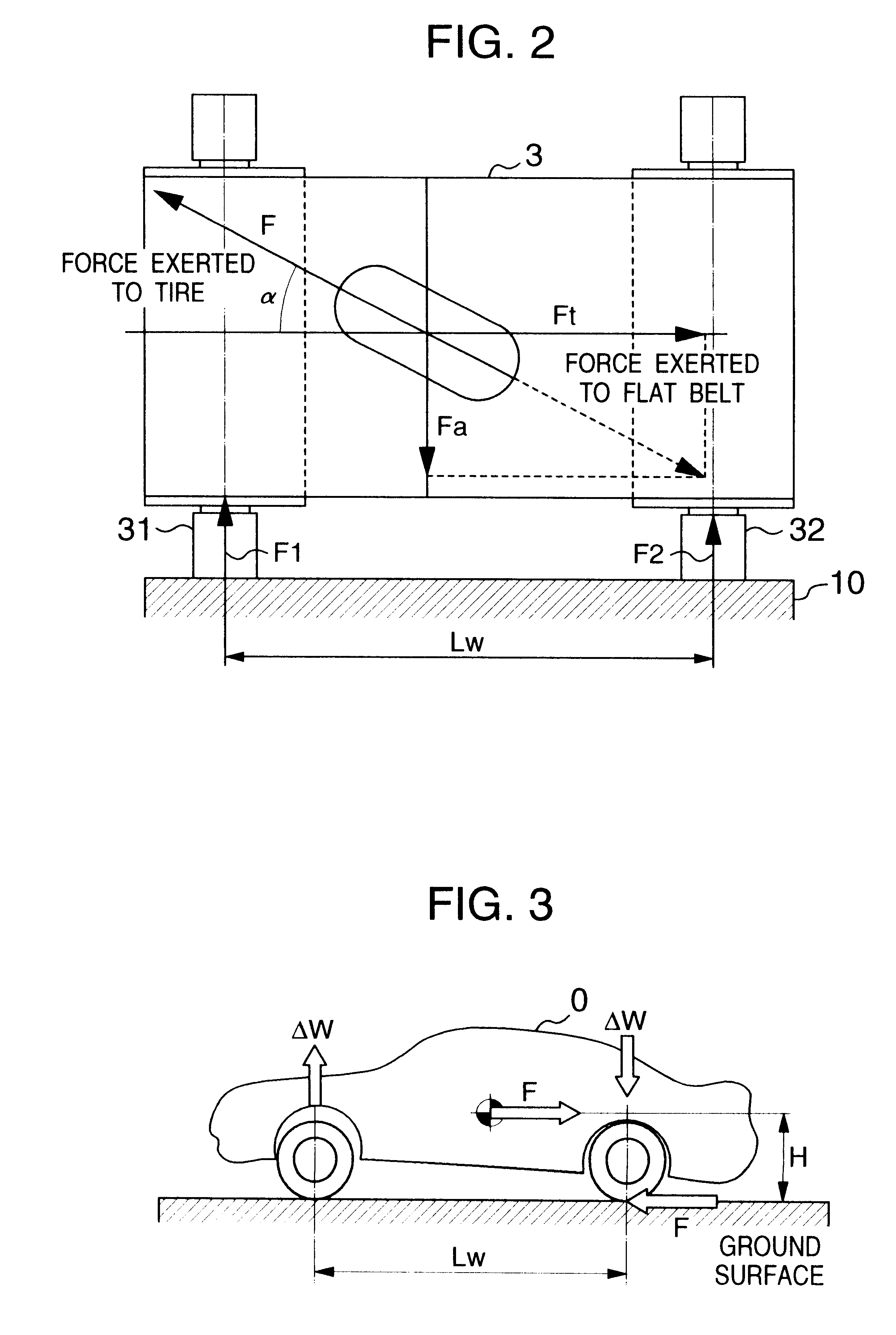Apparatus for the method of testing vehicle
a technology for vehicles and apparatuses, applied in vehicle testing, apparatus for force/torque/work measurement, structure/machine measurement, etc., can solve problems such as not negligible influence factors
- Summary
- Abstract
- Description
- Claims
- Application Information
AI Technical Summary
Problems solved by technology
Method used
Image
Examples
first embodiment
Referring at first FIG. 1a, the present invention will be explained.
A vehicle O is carried on a front left wheel flat belt 3, a front right wheel flat belt 4, a rear left wheel flat belt 5 and a rear right wheel flat belt 6 which serve as dummy load surface means used for a road surface. These flat belts are driven and braked by motor generators (only a motor generator 40 for the front right flat belt 4 is shown) for power generation for absorption. Further, although not shown, the flat belts may be carried on a test bench, or arranged on a base or a floor serving as a reference plane. In such a case that the flat belts are arranged on a base or a floor, these are preferably embedded therein.
The vehicle O is fixed to the frame 10 so as to arrest only a motion longitudinal of the vehicle by means of securing (arresting) members 2. That is, motions in the crosswise and vertical direction of the vehicle, pitching and rolling, and yawing can be produced with no restriction. Accordingly,...
second embodiment
Further, although, in this embodiment, the method in which the actuators are directly attached to the vehicle has been explained, a jig 9 may be provided to the vehicle in order to exert forces to the vehicle from the actuators, as will be explained later in the present invention shown in FIG. 11. With this arrangement, the points at which the actuators exert forces to the vehicle can be changed determined, irrespective of a shape of the vehicle, and accordingly, the drive can be made in a more ideal manner. Further, the freedom with which the actuators are attached to the jig 9 is higher than that of the arrangement in which the actuators are attached directly to the vehicle, thereby it is possible to reduce interference among the forces of the actuators.
third embodiment
Further, as explained in a third embodiment shown in FIG. 12, rollers may be used as the dummy road surface means, instead of the flat belts. This arrangement using the rollers can be constituted by a low cost in comparison with the arrangement using the flat belts, and further, the control of the frictional coefficients of the outer surfaces of the roller can be easily made. However, in the arrangement using the rollers, the positioning of the rollers and the tires is difficult since it is likely that the ground contact conditions of the tires vary soon. In particular, it cannot cope with such a case condition that an angle is set between the roller axial direction and the vehicle crosswise direction (in a yawing occurring condition).
Further, although as shown in FIG. 2, the flat belts or the roller for four wheels are driven, independent from one another, in response to signals from the drive signal storage means 8, the left and right wheels may be linked together, for the sake of...
PUM
| Property | Measurement | Unit |
|---|---|---|
| force measuring | aaaaa | aaaaa |
| force | aaaaa | aaaaa |
| forces | aaaaa | aaaaa |
Abstract
Description
Claims
Application Information
 Login to View More
Login to View More - R&D
- Intellectual Property
- Life Sciences
- Materials
- Tech Scout
- Unparalleled Data Quality
- Higher Quality Content
- 60% Fewer Hallucinations
Browse by: Latest US Patents, China's latest patents, Technical Efficacy Thesaurus, Application Domain, Technology Topic, Popular Technical Reports.
© 2025 PatSnap. All rights reserved.Legal|Privacy policy|Modern Slavery Act Transparency Statement|Sitemap|About US| Contact US: help@patsnap.com



